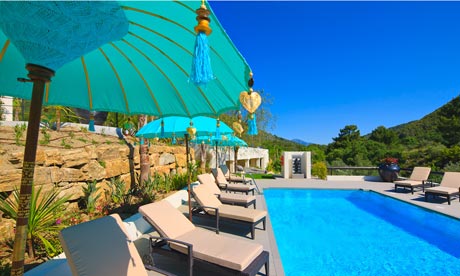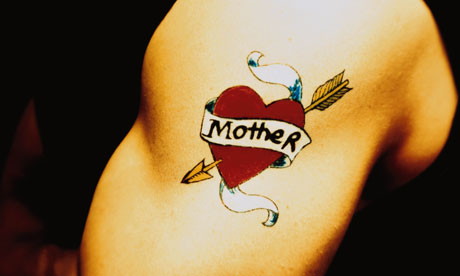
In the weeks leading up to my holiday at Shanti-Som – a new spa retreat between Málaga and Marbella – I had smugly enjoyed trying to make my friends jealous. It was cold and raining in England, and I was about to go to a spa in sunny Spain for a week to detox. No kids, no stress. Just a restful, healthy break from day‑to‑day life.
Largely, it worked. On everyone, that is, except my friend Lucy the Public Health Official, whose face took on an expression of something resembling horror. "That's against just about everything I stand for," she told me, before railing against detox types who just lay off the drink in January. "Anyway," she said finally, "you don't need to detox – you have a liver. Last time I checked, that was the thing that took toxins out of your body.".
I decided Lucy was being a bit of a killjoy and carried on being smug – right up to the moment I arrived at Shanti-Som and saw the programme. I was about to have five days of ingesting nothing but four "cleansing drinks" a day and a vegetable "broth" (not even soup!) in the evening. As someone who loves her food – and always found eating central to every holiday experience – I was appalled.
There was one more thing on the programme that put the fear of God into me. Three little words had been giving me minor palpitations from the moment I read them: "self-administered colonics". I was expected to do this twice a day, every day. Panicked texts to my partner ensued.
I had arrived early in the day – before the programme officially started that evening – so I hatched a plan to enjoy some proper food before the detoxing kicked off. I was just surveying Shanti-Som's delicious lunch menu – Indian thalis, Thai noodle soups, steaks – when the waiter warned me not to get too excited and gently "suggested" I stick with one of two or three less fun options (beetroot and goat's cheese salad without the goat's cheese, for example). I had a delicious vegetable tagine and, against his "suggestion", ordered some cornbread, which I ate with gusto, as if it was the last supper – which to some extent I suppose it was.
Reassurance arrived in the form of Ana Canelas, the health coach who would be guiding us through the programme. She'd read the health questionnaire I'd filled in before coming, which had highlighted habits and issues that I'd begun to accept as a fact of life: that afternoon sweet craving; tiredness after lunch; tiredness most of the time, come to think of it.
"You are really going to benefit from this experience," she said.
She talked me through the various torturous-looking implements that had been left in my room: a body brush for increasing circulation, a tongue scraper (to be used first thing every morning) and finally the implement that looked worryingly like something they use in waterboarding: a long, wide plank with a big hole and a red tube at the bottom. Those colonics again.

The next day the programme started in earnest. After the tongue scraping, body brushing and a cup of hot water and lemon, it was time for the daily yoga class, which was all "oms" and "shanti shanti shantis" and stretches. This type of yoga is very in keeping with Shanti-Som, a spiritual place full of Buddhas, healing corners, open terraces for outdoor yoga and waterfalls celebrating femininity and goddesses.
Then it was a "breakfast" of our first cleansing drink followed, at mid-morning, by our supplements (a series of brown vitamins and minerals) before the thing I'd been dreading: enema time.
I'll spare you the details as you might be reading this over breakfast and this is one of those instances where there is such a thing as Too Much Information. In brief: the practicalities were easier than I'd feared. But I'm not going to lie. It was weird. Very weird. Made weirder by the fact that the enema was made up of coffee water. Two litres of it to be precise, had to go through a hole where, in my experience, coffee doesn't usually go. ("Coffee is a great way to stimulate the liver and help clear out the colon," said Ana. Then, spying my scepticism, added, "Don't worry. You're going to love it.")
That first day I was very hungry and a bit miserable. It was difficult walking past that restaurant and watching regular spa-goers tucking into a proper meal. The broth at dinner time was tasty, but I was gagging for some bread. Or something – anything – to chew.
The detox programme lasts five full days and is strictly regimented. Yoga at 8.30am, cleansing drink at 9, first lot of colonics at 11, and so on. All that really changes is what you're putting into your body each day, with the drinks ranging from wheatgrass green, to beetroot pink to carrot orange. The colonic water that at first had coffee in it was on the next day mixed with clay (good for grabbing mucus apparently) then garlic ("Great for fighting parasites," said Ana). The garlic was the worst.

The weather when I visited, in March, was beautiful, and in between our various detoxing commitments we lounged by the pool, read books or indulged in treatments in the spa. At the beginning of the week I barely had the energy for much else.
"The first two or three days of fasting are the worst" said Ana. "After that, it is much easier."
I went through a bit of a masochistic phase during those early days, eyeing up delicious recipes on my iPad that I promised myself I was going to cook when I got home. But Ana's health class soon put me right about what I should be eating when I got back. It was too much acid in our diet, she taught us, that led to lack of energy and a whole variety of health problems. We should be striving for a more alkaline-based diet including more avocados, nuts and seeds and much, much less meat and dairy.
About halfway through the third day, I turned a corner. It might have had something to do with the fact that I'd noticeably lost weight while I was there, weight I'd been half-heartedly trying, and failing, to lose since having my first child four years ago. Suddenly, looking in the mirror wasn't quite such a depressing sight. Just as Ana had predicted, my energy came back. The daily yoga class was making me feel amazing. On the final night, when we were allowed to eat again, we had a carrot salad to start with, followed by a small plate of quinoa and roasted veg. I don't know whether my taste buds were overexcited at the thought of real food, but it seemed like the most delicious meal I'd had in a long time.
A detox holiday like this is not for everyone. But Shanti-Som is a lovely, relaxing place, so it's fortunate that they have a lot less extreme healthy offerings, including yoga retreats and weight loss programmes that do involve eating some food.
I couldn't say whether I'd do something as drastic as a detox week again. But for me, it worked. Three months later, I've managed to put some of the healthy eating lessons into practice and look and feel better for it. The challenge now is to try to keep it up in the long term.




 Gulets, traditional Turkish wooden boats, anchored off Gemiler Island. Andrew Eil
Gulets, traditional Turkish wooden boats, anchored off Gemiler Island. Andrew Eil The Lydian, an ancient Greek amphitheater in Knidos, on the Datca Peninsula. Andrew Eil
The Lydian, an ancient Greek amphitheater in Knidos, on the Datca Peninsula. Andrew Eil A gulet on Gokova Bay, near the city of Bodrum. Andrew Eil
A gulet on Gokova Bay, near the city of Bodrum. Andrew Eil The writer on the Zephyria II, with Butterfly Valley in the background. Andrew Eil
The writer on the Zephyria II, with Butterfly Valley in the background. Andrew Eil An inlet on the Gulf of Fethiye, near Gocek. Andrew Eil
An inlet on the Gulf of Fethiye, near Gocek. Andrew Eil

